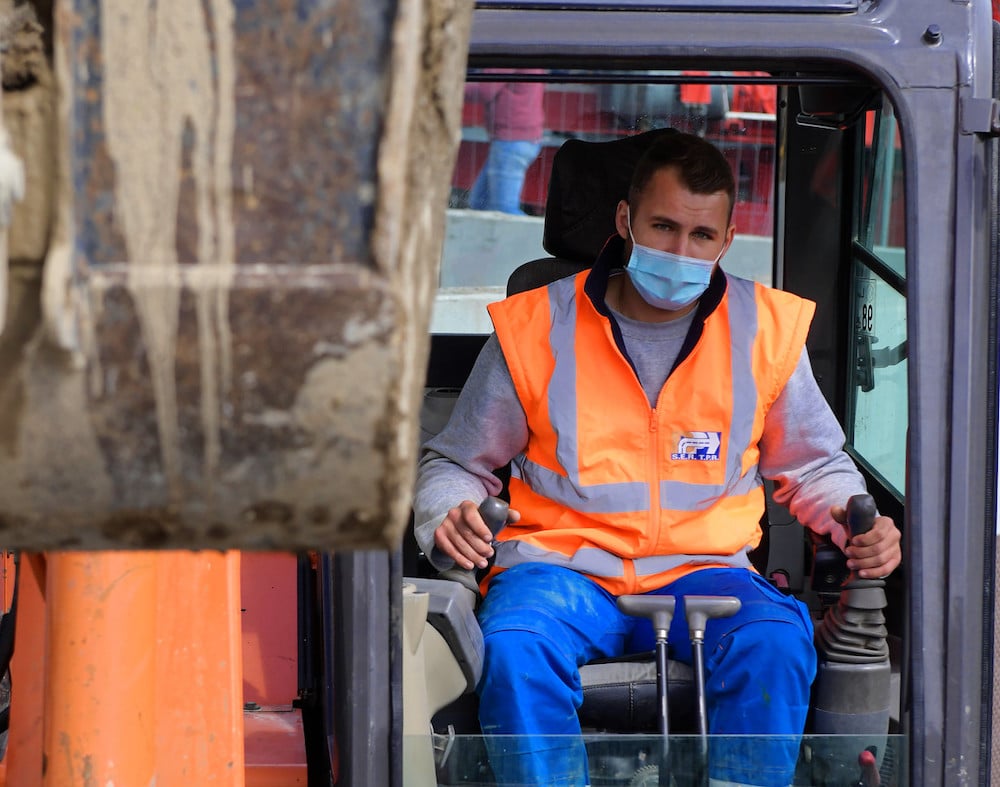Daron Acemoglu makes a convincing case for how AI can, and should, be redirected to create good jobs and invest in human potential. I agree with his core critique and analysis. But his essay misses the broader context of an even bigger disruption to work: the current COVID-19 pandemic and recession. Paving the way for a more equitable present and future of work will require addressing not only the various threats of automation but also the interrelated challenges created by the pandemic.
I have long shared Acemoglu’s concerns about the potential for technological change to exacerbate inequality. My own research has raised concerns that AI, automation, and digitization may disproportionately impact those who are already financially insecure and displace the work of women, low-wage workers, and workers of color.
Despite these real concerns, it was an unexpected virus—not an algorithm or robots—that blindsided the world last year and caused staggering job losses among marginalized workers. The K-shaped pandemic recession has pummeled low-wage workers. Black and brown workers have suffered the worst losses, and women have left the labor force in droves—prompting the moniker “she-cession.” The potential labor impact of new technologies, including AI and robotics, could undermine recovery efforts in the years ahead and exacerbate the challenges of job quality and quantity facing the most marginalized.
Building on Acemoglu’s three-pronged approach, I would emphasize three priorities to address these interrelated issues: job creation, labor policy reform and institutional support, and worker empowerment in the workplace.
Job Creation
Job creation is paramount. The pandemic has shifted the nature of the challenges facing American workers. Before the pandemic, the greatest challenge was a crisis of job quality. In 2019 my colleagues Martha Ross and Nicole Bateman calculated that more than 53 million people—44 percent of the U.S. workforce—received low wages. Technology and automation contributed to this quality crisis: many higher quality, middle-wage jobs were automated away, while poorer quality low-wage jobs in the service sector proliferated.
Now, workers at the bottom end of the wage spectrum face twin crises of both job quality and job quantity. The pandemic has created a deep hole in the labor market, with 10 million people unemployed, compared to 5.7 million just before the pandemic began. While unemployment levels should drop significantly as the pandemic recedes and the economy recovers, millions of unemployed and low-wage workers will still struggle to connect to work, and especially decent work. New estimates from the McKinsey Global Institute project steady declines in low- and modest- wage jobs over the next decade, while new estimates from the U.S. Bureau of Labor Statics predict either a decline or significant slowing in the growth of low-wage jobs through 2029. Automation and AI are just one factor in this decline. Job growth will also be hampered by lingering or even permanent shifts post-pandemic, including an increase in remote work, reduced business travel, some continued aversion to close physical proximity, shifts in customer habits, and an increase in online shopping. Combined with the potential for an upsurge in automation, these pandemic shifts will likely reduce the number of people working as cashiers, servers, retail associates, hostesses, receptionists, and clerical and administrative assistants. Many of these at-risk jobs are held by women.
While discussions of technological displacement often lead to a focus on retraining and skills, the primary challenge facing workers today is a demand problem, not a supply problem. An effective public policy response requires robust monitory and fiscal policies. The $1.9 trillion economic stimulus plan passed in early March 2021 is an important start, providing much needed relief to families, employers, and state and local governments. An infrastructure bill could open additional opportunities to create jobs, including new clean energy jobs. The government could also subsidize employment directly, such as through community-oriented employment, an expanded national service program, and a youth employment program.
Labor Policy Reform
Beyond job creation, a second key priority should be strengthening labor market institutions and policy reforms. These steps are critical to improving job quality and curbing inequality, especially as better-quality middle-wage jobs continue to be automated. Acemoglu’s essay touches on policy changes like raising the minimum wage, but their centrality to a more equitable future of work cannot be overstated. The pandemic has spotlighted the enormous gap between the value that low-wage frontline and essential workers bring to society and the paltry pay they receive. My research with Laura Stateler found that upwards of half of all frontline essential workers are in occupations that earn less than a living wage. Nonwhite workers make up a disproportionate share of the essential workers risking the most on the COVID-19 frontline for low wages. From security guards to home health aides, hospital housekeepers, warehouse workers, and grocery clerks, low-wage frontline jobs offer meaning and purpose but far too little pay, scant benefits, and little security.
The sacrifices of frontline essential workers during the pandemic have stirred society’s conscience and buoyed support for policy change to better compensate them. Support for raising the federal minimum wage has grown, especially among Republicans and independents. Though Democrats in Congress did not succeed in raising the federal minimum wage to $15 hourly in the COVID-19 relief bill, the Biden administration and Democratic leaders in Congress have expressed strong support for continuing to push for a higher minimum wage. This federal effort is important: research that my colleagues and I conducted suggests wage increases are unlikely without government intervention. In an analysis of the pandemic profits and pandemic pay of thirteen of the largest retail companies, Laura Stateler, Julia Du, and I found that despite earning an additional $17.7 billion in the first three quarters of 2020 compared to 2019—a 42 percent average increase—most companies shared little of their profits with their workers through temporary pay bumps or permanent wage increases.
Worker Empowerment
A final priority should be implementing new forms of worker voice and power in the workplace. Workers need a say in the decisions their employers make in deploying technology. Acemoglu’s essay focuses mainly on democratizing AI research, but the decisions that employers make when they deploy these technologies in the workplace also matter. In many cases the technology is itself neither inherently good nor bad. What matters is how employers deploy it—and whether they involve workers in the process.
The status quo for workers is deeply concerning. In interviews through a human-centered research project we led at New America, Amanda Lenhart and I heard from dozens of workers that they had little voice or say in the technologies their employers deployed. Cashiers, fast food workers, and clerical staff in jobs at high risk of automation workers often expressed feeling like they were a cost their employers were trying to minimize while aiming to maximize profit. They were especially resentful of self-checkout lanes (as Acemoglu has written about in other contexts) and other poorly designed technologies that made work harder for them. Most workers we interviewed were deeply pessimistic about the future for humans in their workplaces as AI, mobile ordering, online shopping, self-checkout, food delivery, and software innovations changed their work.
With union membership at historically low levels, workers have few formal avenues for voice in the workplace. The aggressive steps Amazon is taking to fight a groundbreaking union effort in Bessemer, Alabama, illustrates the challenges workers face as they seek a seat at the table as work is transformed. While the obstacles to collective bargaining remain formidable, politics and public opinion are starting to shift. President Biden recently issued a rare statement from the executive in support of the right of Amazon workers to organize, while the White House gave its support to labor legislation that would dramatically strengthen collective bargaining rights.
Progress on these three priorities is both necessary and urgent, but there are signs of hope. The unequal suffering and sacrifices caused by the pandemic have bolstered public support for structural reforms that could ultimately help redirect AI. A majority of Americans back a $15 per hour minimum wage, while 65 percent of Americans now support unions—the highest level since 2003. Still there are mountains ahead, including securing support from some Republicans in Congress. Until we meet this challenge, the future of work risks leaving many workers behind.








